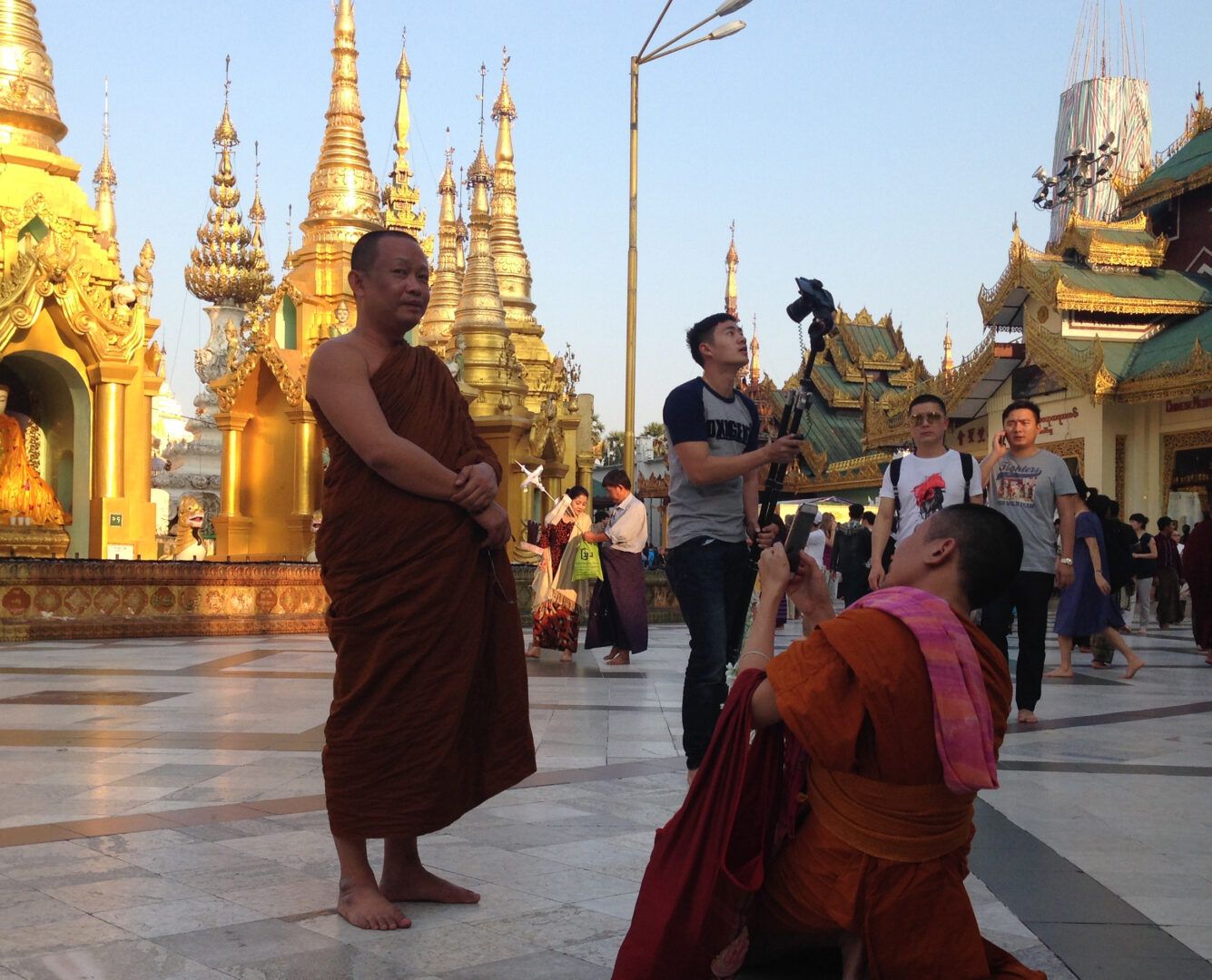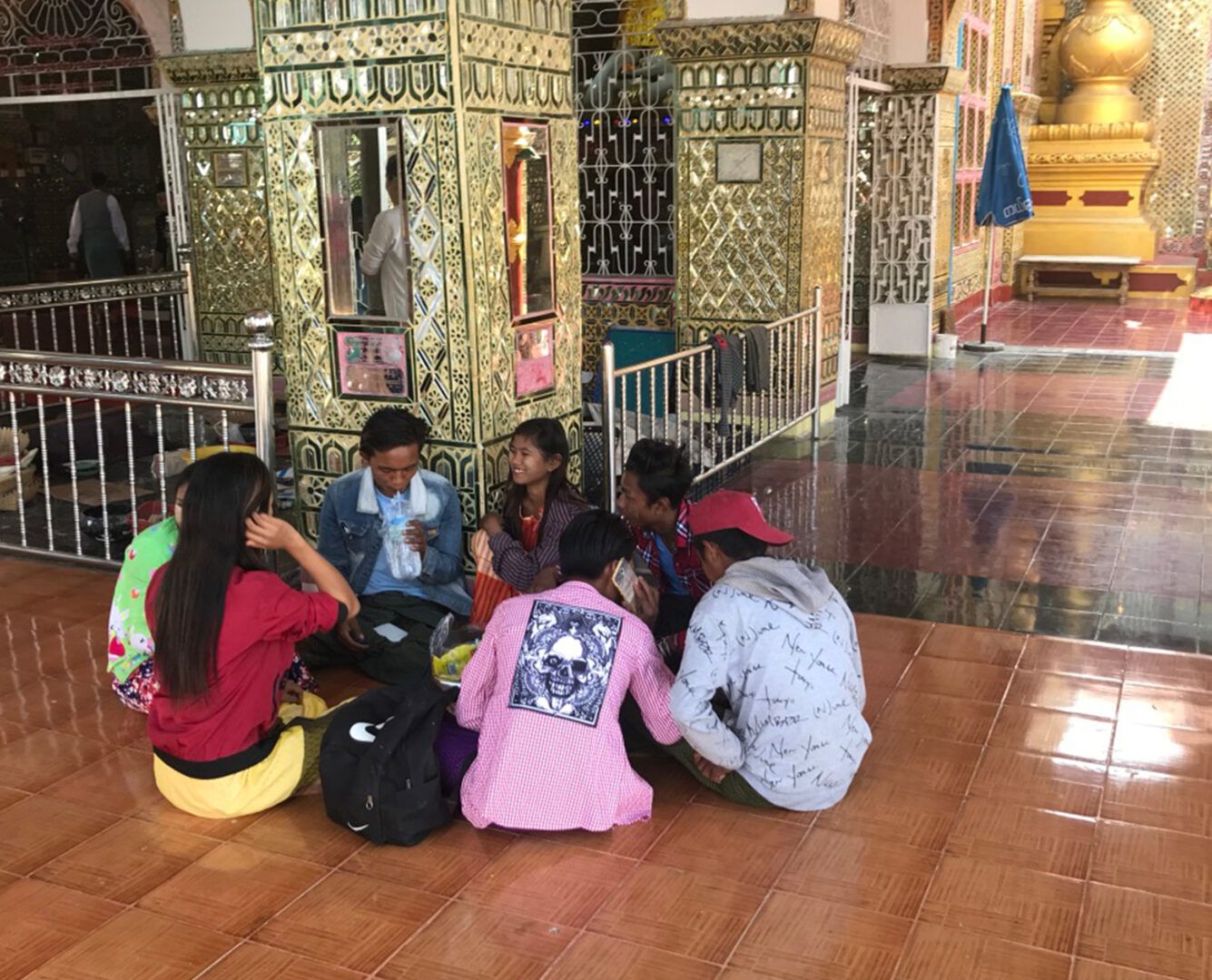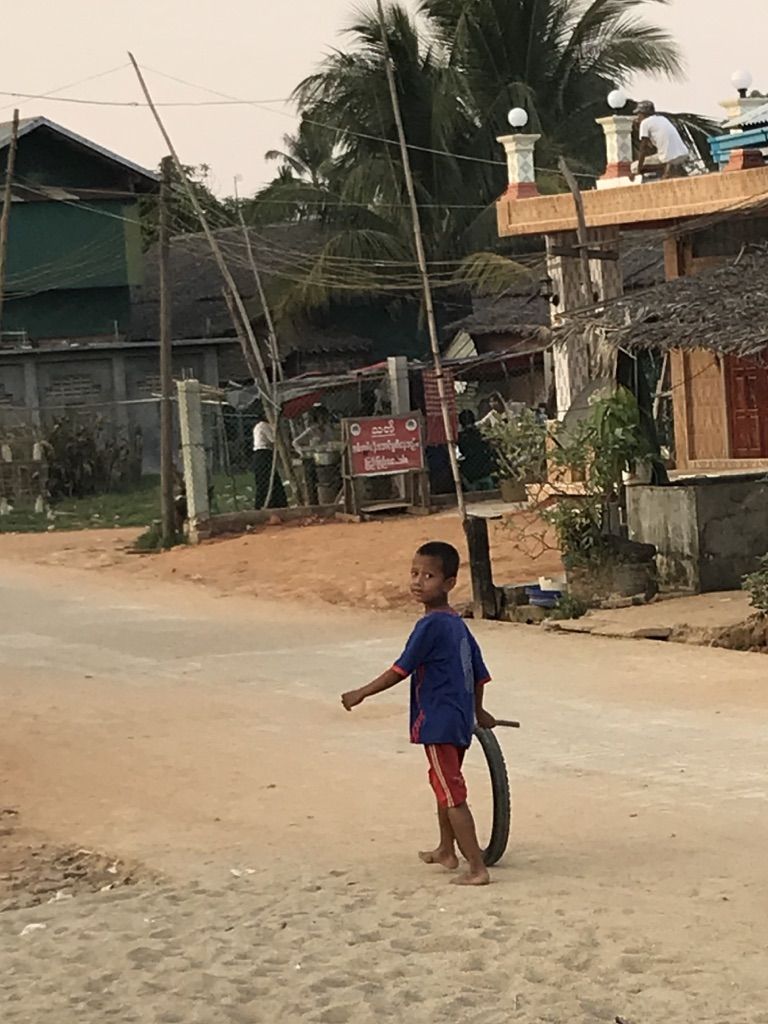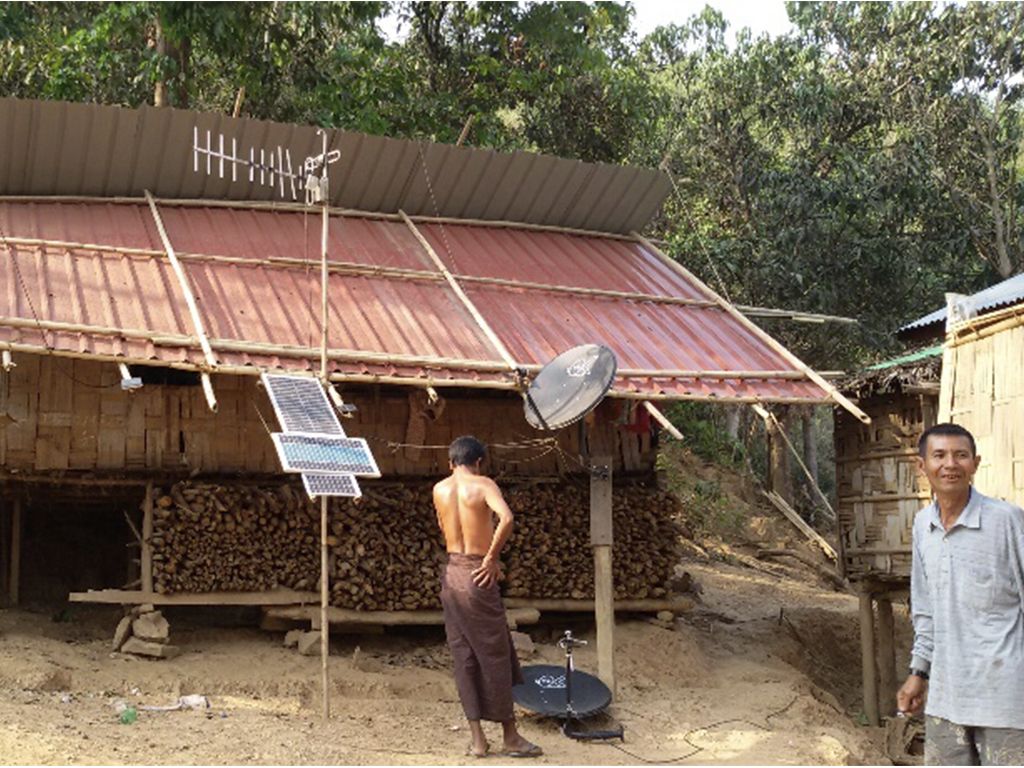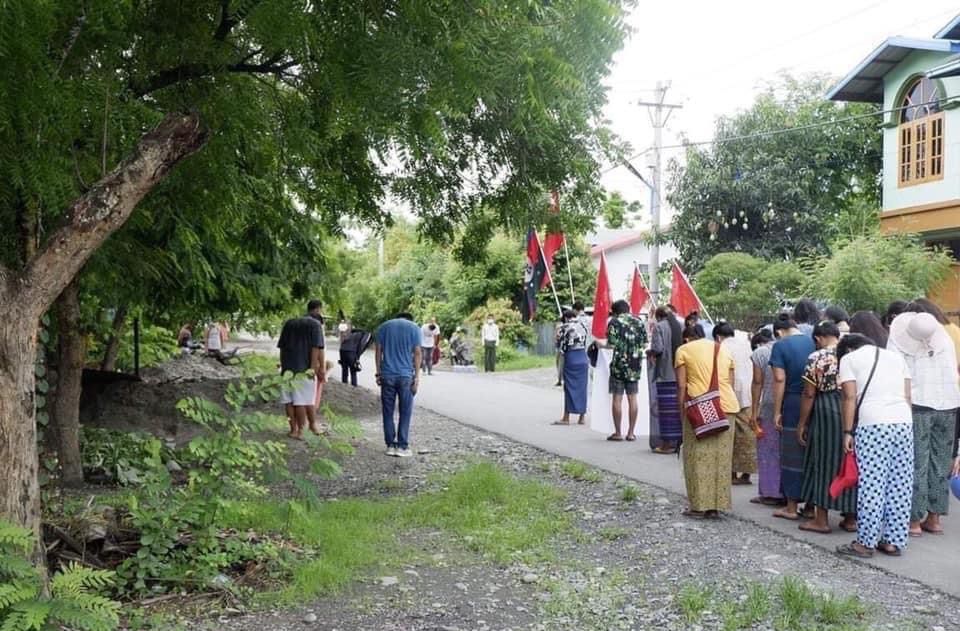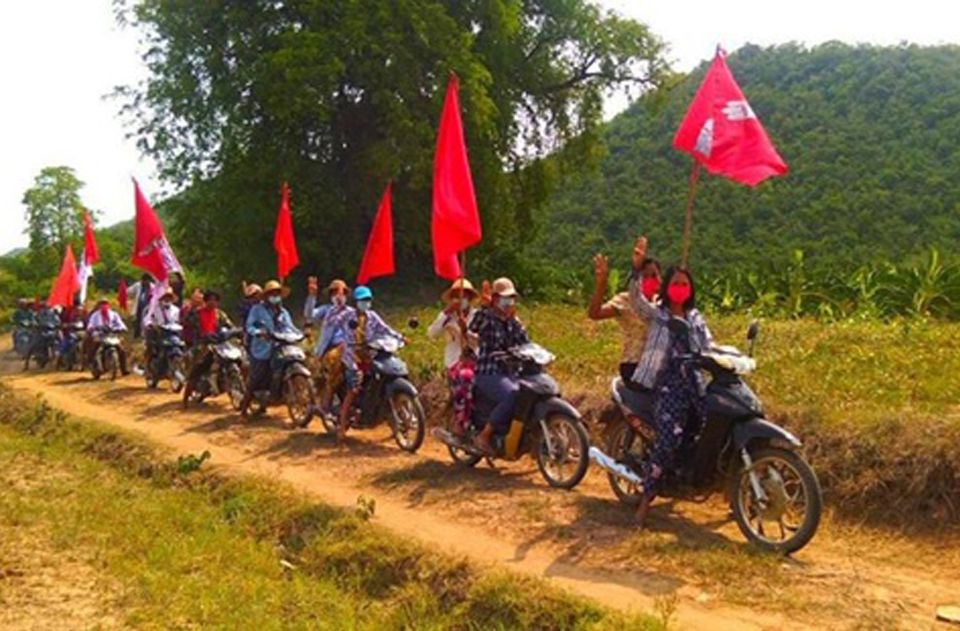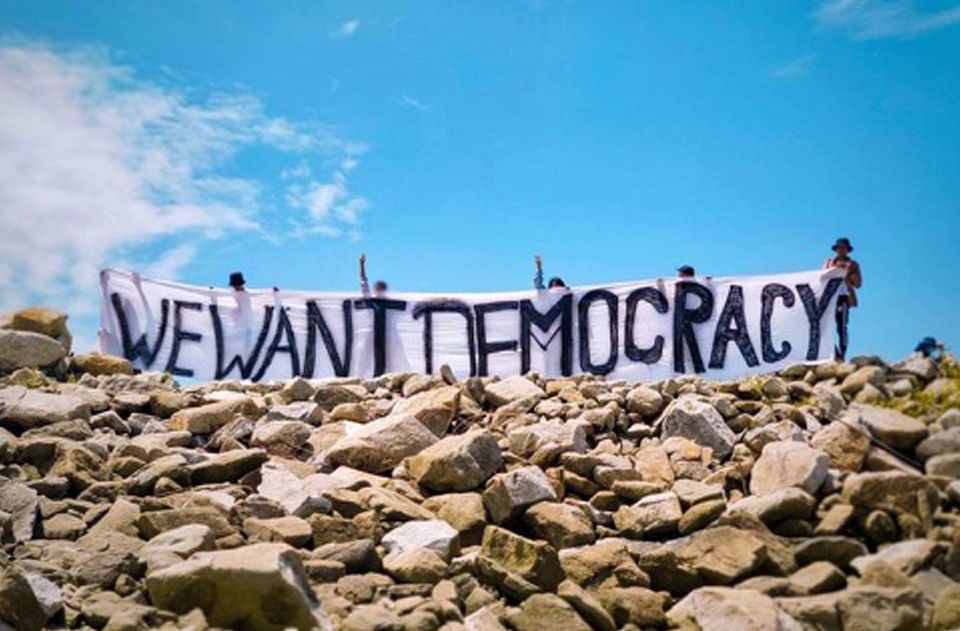LIZ SAVAGE
Myanmar: a post-colonial tale of fear, treachery and hope
On the 1st of February 2021 the military seized power in Myanmar. They rolled their tanks into the parliament buildings in the capital Nay Pyi Taw, imprisoned ministers from the National League for Democracy, the party which had just won a landslide victory in the elections, and with a single action crushed the hopes of millions of Myanmar people who dreamt of a better future. But in fact, the military had never relinquished their hold over the country.
Myanmar is a vast and beautiful land. Situated on the Eastern shores of the Bay of Bengal it lies like a rich pearl between Bangladesh and India to the Northwest, China to the Northeast, and Lao and Thailand to the Southeast. The centre contains huge fertile plains dissected by three great rivers running for more than a thousand miles from the Himalayas in the North to the vast river deltas of the South. For many years it was the rice bowl of southeast Asia and the biggest exporter of rice in the world.

The central plains are largely populated by the Bamar, from whom the British derived their name for the country, Burma, a land which they occupied and colonized from 1876 to 1948, and which, before their arrival, had been an independent kingdom since the 12th century. Surrounding these fertile plains are mountain ranges covered in forests and containing vast stores of jade, gold and rubies. These mountain areas are home to people of many ethnicities, each with their own style of dress, food, customs and beliefs, and speaking between them, 123 different languages.

The colonizers plundered the country’s vast natural wealth and enriched themselves by stealing its reserves of oil and gas, its precious stones and metals, and its seemingly inexhaustible supplies of hard wood. Meanwhile the capital, Rangoon (now Yangon), became one of the most important cities in the region and home to one of the most prestigious universities in Southeast Asia. Before the second world war Burma had the highest rate of literacy in the so-called British Empire.
During World War 2 the country was occupied by the Japanese and so severely bombed by Allied forces that its cities and industries were left in ruins. Soon after the war ended, in 1948, General Aung San, father of present-day leader Aung San Suu Kyi, secured independence for the country from the British. His iconic portrait, although banned for many years, still hangs in many a Myanmar home and is greatly revered.

After independence, the newly formed country was plunged into a civil war from which it has never since fully emerged. The Bamar majority could not reach agreement with the many sizable ethnic groups (or ‘races’ as they are officially called in Myanmar), over which it purported to rule but who had no desire to give up their autonomy: among them the Shan, the Chin, the Karen, the Arakhan and the Kayah.

These ethnic groups formed armies which are still active today and the country has been ruled by a military which has been engaging in civil war for more than 50 years, longer than any other conflict in the world today. To maintain its power the military dictatorship instilled a regime of fear, brutally repressing any form of dissent, and for many years closing the country to the outside world. There was little economic development and through mismanagement successive military governments turned a country with enormous natural wealth into one of the poorest in the world. The generals, like the colonizers before them, enriched themselves at the expense of the population, selling the country’s resources to the highest bidder and pocketing profits worth billions, while living a lavish lifestyle unimaginable to the general population. As a result, China now owns much of Myanmar’s vast reserves of natural gas and hydro-electric power, gained through damming up the rivers, and a stream of lorries loaded with vast tree trunks of magnificent hardwood ploughs night and day through the mountains to the Northeastern border. Thus, both the fertile plains and the ancient hardwood forests are being depleted and the livelihood of many millions destroyed while none of the profits from these sales or the unbridled mining of tons of jade, rubies and precious metals, have been directed towards improving infrastructure, education or healthcare. Myanmar now ranks somewhere near the bottom on most international scales of human prosperity.
By 2011 the military had accrued sufficient wealth to feel they could safely share some of their power with a civilian government, hoping perhaps in so doing to enhance their international reputation, which would allow them to travel and enjoy their wealth more freely. The new constitution of 2016 allowed for elections but ensured that the military kept control of the key ministries – Defence, Home Affairs (which controls the police) and Border Affairs – as well as a quarter of the seats in parliament.
I arrived in Myanmar in 2016, just as this first quasi-democratic government took office with Aung San Suu Kyi at its head as honorary ‘state counsellor’. I was there to take part in a nationwide teacher trainer project aimed at raising standards of education in primary schools. As the country opened up, I saw people daring to hope and dream that they, or at least their children, might benefit from a new economic prosperity after decades of repression and fear. Most people I met were still hesitant about expressing their views but the recent arrival of affordable internet was opening their eyes to the outside world and the possibilities on offer in a modern democratic society. Computers were still a rarity, and in the college where I worked were kept strictly under lock and key, but within the space of a few years, anyone who could afford one had acquired a mobile phone, and a new era of free exchange of information began for Myanmar. An important part of the new teacher education programme which I helped to deliver was the development of ‘critical thinking skills’ and there was a palpable buzz of optimism in the air, aided by the newly freed-up press, able now for the first time to print actual news. It was an exhilarating time to be in Myanmar. I took this photo of a spontaneous celebration in a market in Yangon on the day the first elected government took office:

Myanmar people took me into their hearts. Young teachers ferried me around Mandalay on the back of their motorbikes to see the sights of the city, invited me into their lives and shared with me their hopes, their frustrations and their aspirations. They were devout Buddhists and our trips generally included one or more pagodas, a favourite place for Myanmar people to visit:
I was also invited to visit the teachers’ home villages and here I saw how people live outside the cities, which is where the majority of the population still resides.
Myanmar seemed to be in a state of flux as the largely rural population began to move to the cities:


The older generation were skeptical and reminded me how in the past every time a small measure of freedom had been introduced it had always been brutally taken away again, but in spite of this there was a great spirit of optimism, and I for one could not imagine that the ‘bad old days’ would ever return. But this is exactly what happened on Feb 1st of this year.
The top military general, Min Aung Hlaing, possibly fearing reprisals after the overwhelming victory of the NLD, declared the elections fraudulent (although there was no evidence for this) and installed a military junta to replace the elected members of the government. Isolated from the general population, the general must have imagined that people would accept this change, but he imagined wrong. There were soon daily protests and the placards said it all:

People in Myanmar are no longer willing to return to a life under military rule and give up their hopes for the future. The protests started with medical staff in the hospitals wearing a red ribbon, the colour of the opposition party, the NLD and giving the three-finger salute, which has now become the ubiquitous symbol of resistance in Myanmar.

People started to clang pots and pans, a traditional form of protest.

And within days, aided by Facebook, a powerful resistance movement had emerged, the Civil Disobedience Movement (CDM). There were huge demonstrations in all the major cities


And hundreds of peaceful protests erupted in towns and villages throughout the country.
This tidal wave of protest has proved unstoppable. People everywhere, of all ages and ethnicities, are continuing to protest every day in spite of the danger to themselves and their families, and in spite of the brutality of a military regime which is not hesitating to shoot its own unarmed citizens and which in effect is waging war on its own people.


Soldiers shoot indiscriminately into peaceful crowds of protesters and make nightly raids, arresting and killing people in their own homes; they drag the wounded from hospital beds and arrest the doctors who treat them. They burn down villages suspected of harbouring dissent:

They have also emptied the prisons of their previous inmates and filled them with more than 3500 supposed protesters and they try to instill fear by displaying hideous photos of the torture they routinely perpetrate in prisons. But they can’t stop the protests. June 19th, was Aung San Suu Kyi’s 76th birthday and the country honoured their chosen leader with a special ‘red lip’ day.

So far the military have killed more than 870 people, including 50 children, and a further 5000 people have been detained and are in prison or dead. More than 60 journalists have been arrested and all free media shut down. Watch this video to hear what a Myanmar resident has to say about the situation:
Since the coup, I have been in contact with my friends, when that is possible, to find out how they are doing. Immediately after the coup all the Education Colleges closed and most teachers returned to their home towns or villages. Like many hundreds of thousands of other civil servants in the country they are taking part in what they see as the only viable option: joining the Civil Disobedience Movement, and refusing to work and collaborate with the military dictatorship. Doing so would mean giving up all that they have gained in the past few years, and their hopes of building up their country and making a better life for their children.
They have now, like 125,000 other teachers (a quarter of all teachers in the country) been suspended; the military have entered the schools:


My friends have lost their jobs, their salaries and their future careers. Some had started on PhD programmes and were hoping to study abroad but instead they now face the threat of imprisonment, torture and death for themselves and their families. They have received barrages of text messages threatening ‘punishment’ and seen nearby villages burnt down. They have enough rice stored for a few more months they say, but what then? Their stories are heart-rending and their bravery astounding but for them winning is the only option; resisting the military and losing their job is a ‘badge of honour’.
So how will this story end? The military is unable to restore stability: the majority of civil servants are still on strike; banks are still closed and economic activity is more or less at a standstill with disastrous results for people’s livelihood. More than 60% of the population now has less than 2 dollars a day to live on and many have nothing. If this continues, the country is set to become a ‘failed state’, open to disastrous exploitation and the greatest waste of human resources imaginable. This apart from all the human suffering involved. The alternative could be a newly formed National Unity Government (NUG), which is supported by my friends, the CDM movement and nearly everyone in the country who is not part of the military. It is an alternative government-in-hiding in which, for the first time, different ethnic groups are united to offer a broad front against the illegal junta. It provides an opportunity for co-operation to end the decades-long civil war and continue on the road to development and prosperity. How the story will end is unclear, but for now the brave people of Myanmar are refusing to give up hope. We need to stand by them.

If you would like to read more about the future of Myanmar.
And if you would like to send a message of support or donate to people in Myanmar.

